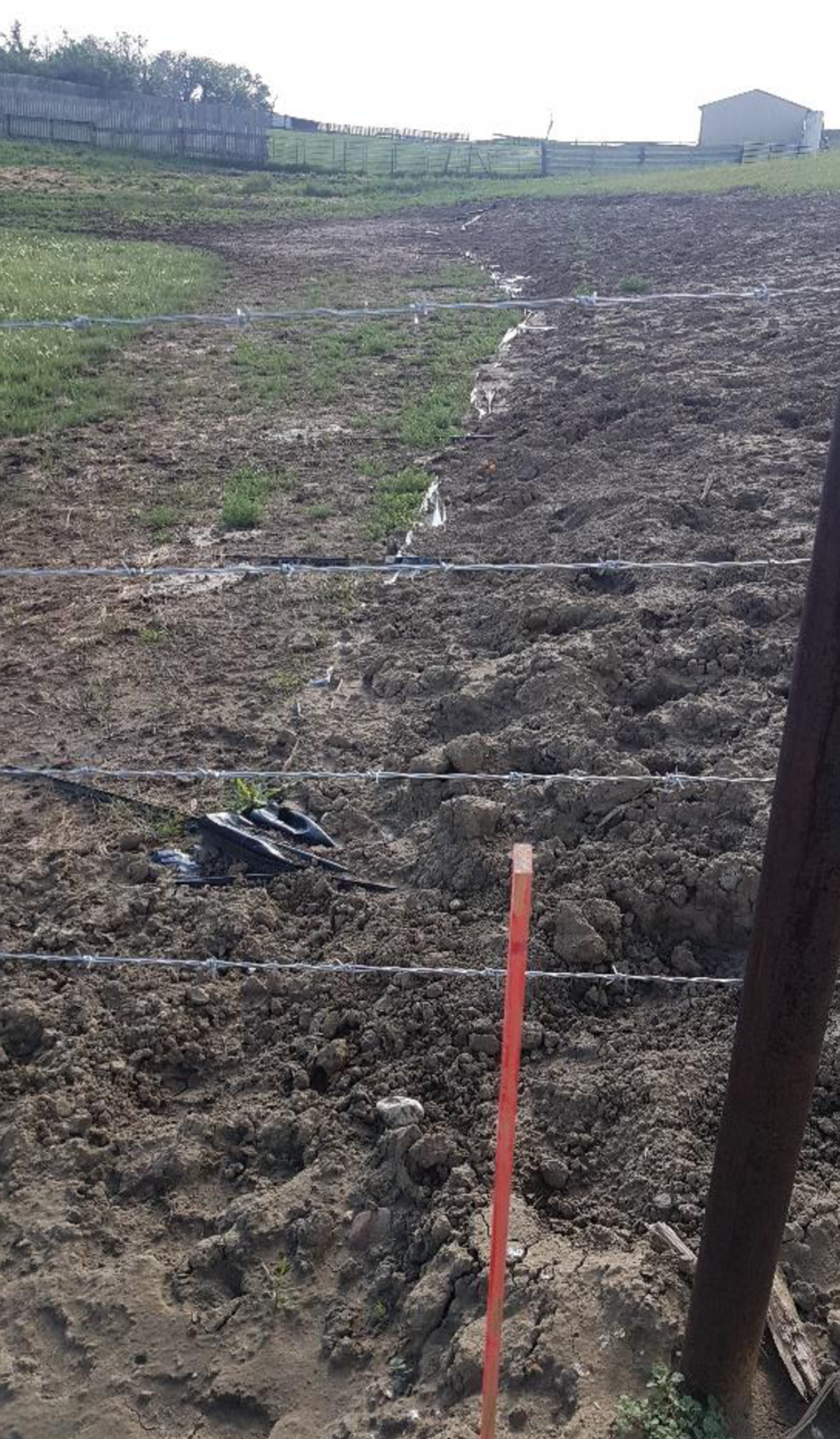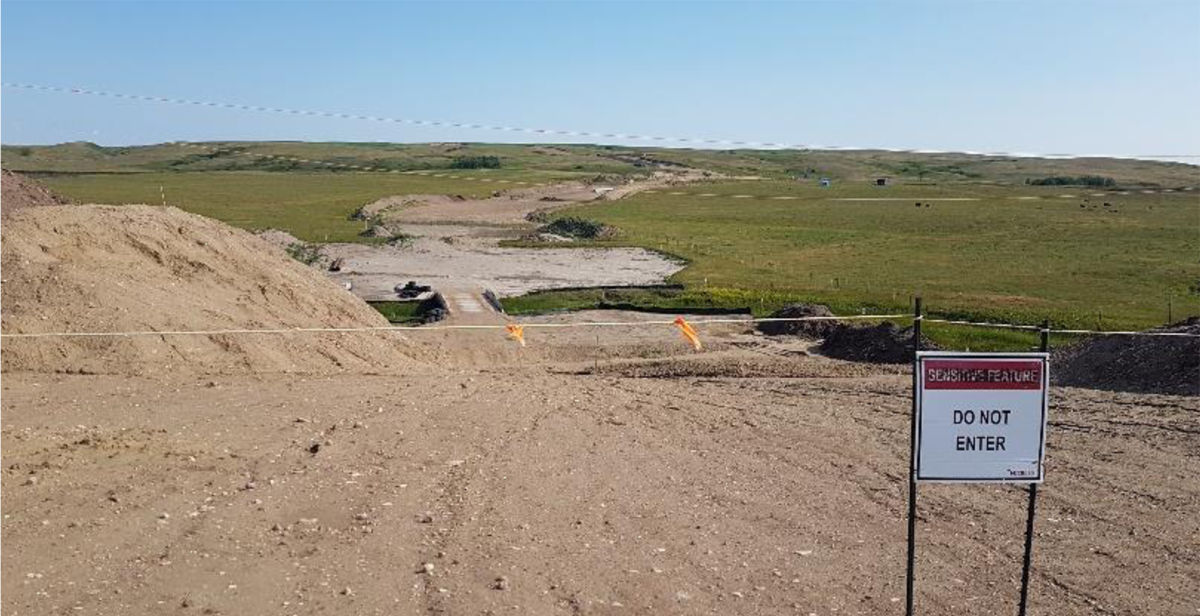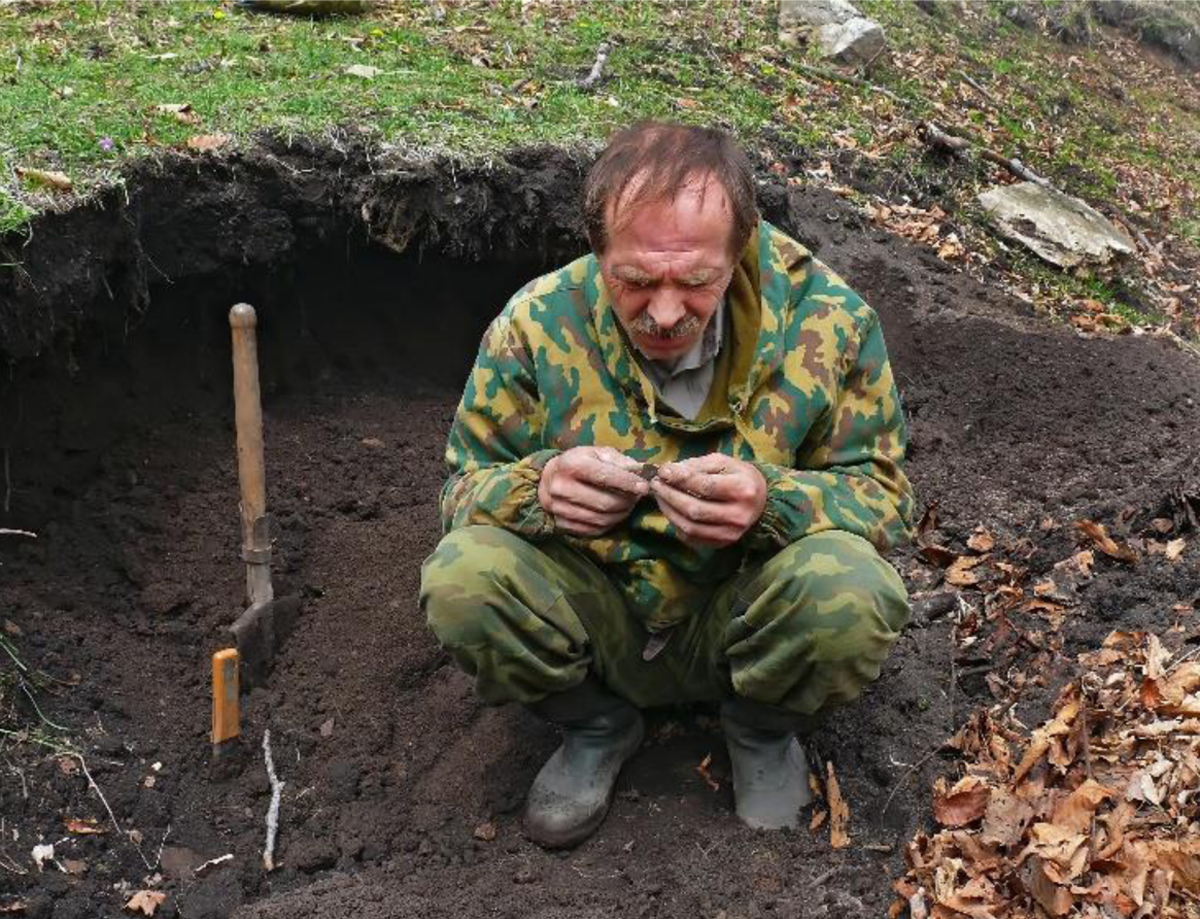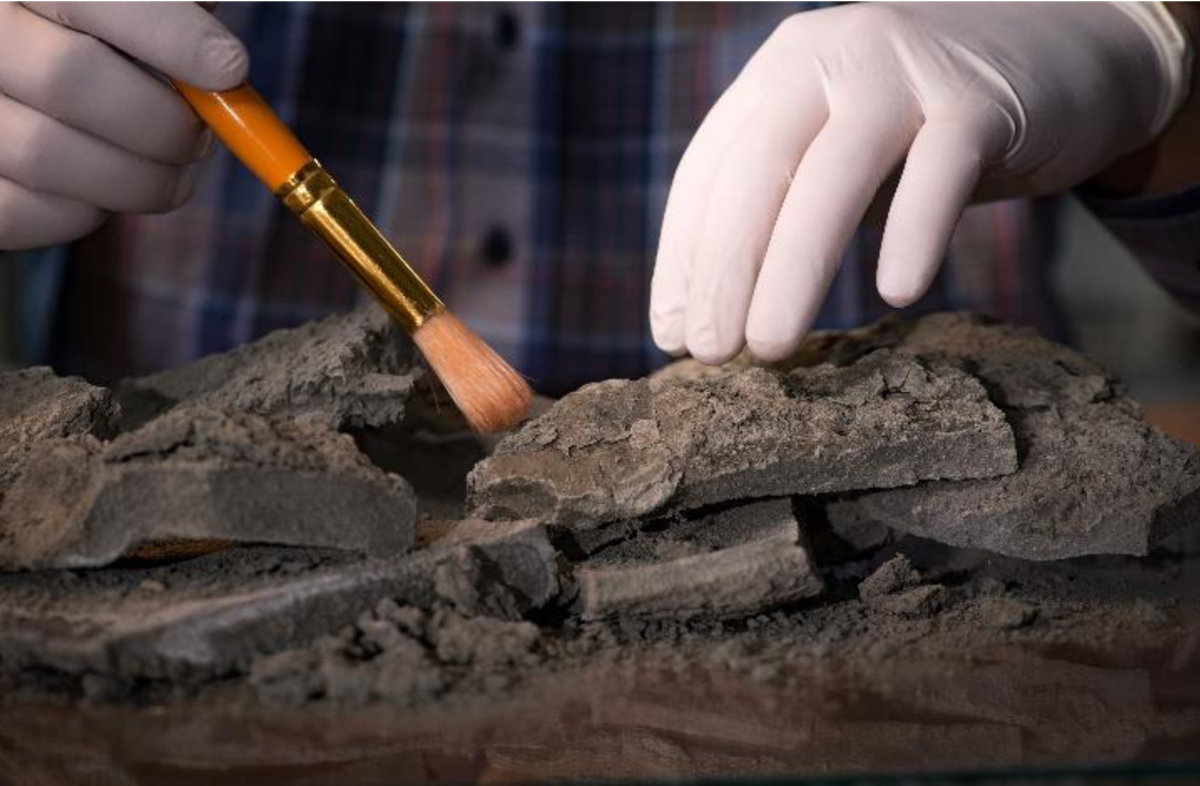ARCHIVED – LMG News – November 2021
This page has been archived on the Web
Information identified as archived is provided for reference, research or recordkeeping purposes. It is not subject to the Government of Canada Web Standards and has not been altered or updated since it was archived. Please contact us to request a format other than those available.

LMG News – November 2021 [PDF 999 KB]
The LMG in a nutshell
The Land Matters Group (LMG) examines and resolves land issues related to energy infrastructure through a collaborative process.
The LMG is a forum for members to exchange information on the protection of the rights and interests of landowners, with the ultimate goal of achieving regulatory excellence.
The LMG advisory committee is made up of members from across the country who represent the membership. Members of the advisory committee provide advice and make comments and recommendations to resolve land issues.\
Members are landowners, landowner associations, advocacy groups, as well as energy sector associations and companies, land professionals and government officials.
Welcome to the LMG News, the e-newsletter for all registered members of the Land Matters Group (LMG)
Table of Content for this November 2021 issue:
- The LMG in a nutshell
- Update from the Editor’s Corner
- CER makes Reconciliation a priority
- Indigenous Monitors, an essential resource at the CER
- Sites of Indigenous Significance
- Chance Finds

Figure 1 – Sundial Hill Medicine Wheel in south eastern Alberta. This religious site was constructed by Indigenous people of the Plains.
Update from the Editor’s Corner
As we prepare to publish this latest issue of the LMG News, I feel great comfort in acknowledging how much this newsletter has evolved since the beginning of the year. I am especially pleased to see that once again we are providing our readers with content based on topics of relevance to a wide and diversified audience.

Figure 2 – Man and woman walking towards the sunset.
For the first time ever, we are dedicating this special issue to feature a series of articles that are all based on Indigenous content and we are doing so with the intent that we can bridge the knowledge gap between the rights and interests of landowners and those of Indigenous peoples. For example, you will learn about the CER’s role in ensuring that federally regulated companies comply with the obligation to protect the discovery of items of Indigenous heritage: why is the role of Indigenous Monitors so important and what happens when Indigenous artefacts are found on a property?
By providing this information, our objective is to dispel some of the misinformation and to strengthen the relationships between stakeholder groups and Indigenous peoples, as we all work towards a common goal.
We understand that these subjects may be new information for some. Making these changes and starting new conversations on difficult subjects is the foundation of new and reconciled relationships. If you have questions, please reach out to our Land Matters Advisory Service by email LMAS.SCQF@cer-rec.gc.ca.
From one issue to the next, I am also seeing a rise in the number of LMG membership, which in turn should translate to a greater readership. We encourage all of you to share the LMG News within your own circles and please do invite your own membership to join the LMG. They can sign up on this page: Land Matters Group.
Véronique Duhamel
Director of Engagement
CER makes Reconciliation a priority
Author: Robin Zielke
As landowners affected by energy infrastructure in Canada, you are among our most valued stakeholders; as such, we want to keep you up to date on the work we are doing to reconcile our relationship with the Indigenous peoples of Canada, and how it may overlap with the work we do with you.
In 2019, the Canadian Energy Regulator Act (CERA) was brought into force. The CERA created new obligations for the Canada Energy Regulator (CER) to carry out its mandate in a manner that achieves reconciliation with First Nations, the Métis and the Inuit, which also involves implementing the United Nations Declaration on the Rights of Indigenous Peoples.
In adherence to the CERA and our mandate, we have committed to transforming the way the CER works by integrating Reconciliation into every aspect of our work with the Indigenous peoples of Canada. Among other initiatives, we are enhancing Indigenous peoples’ involvement in how we discharge our mandate recognizing their unique cultures, knowledge, and histories. Examples of this include the work our Inspectors have done recently with Indigenous Monitors to collaborate in verifying the compliance of construction projects and our work with Indigenous communities on emergency preparedness. These systematic changes in relation to how we conduct our business are guided by the Calls to Action of the Truth and Reconciliation Commission, and the Principles respecting the Government of Canada’s relationship with Indigenous peoples.
We have received feedback from landowners and Indigenous peoples that improvements can be made in terms of how companies interact with them, once project approvals are in place. In the coming months, we will be launching a review of our principal regulation for pipeline oversight – the Onshore Pipeline Regulations (OPR). We look forward to working with landowners on the review, and similarly, this work will provide an opportunity to transform the way the CER and its regulated companies work with Indigenous peoples.
What we hope to see through our collective Reconciliation efforts is a transformation around the way we work – one that clearly demonstrates that Indigenous perspectives and values are equally reflected in all aspects of our work. We look forward to continuing the sharing of our journey towards ReconciliWhat we hope to see through our collective Reconciliation efforts is a transformation around the way we work – one that clearly demonstrates that Indigenous perspectives and values are equally reflected in all aspects of our work. We look forward to continuing the sharing of our journey towards Reconciliation with you.ation with you.

Figure 3 – Looking up towards the sky from inside a tipi.
Indigenous Monitors, an essential resource at the CER
Author: Peter Mcpherson, Apeiron Environmental Ltd.
Indigenous Monitors provide a unique and essential lens into major pipeline construction activities to ensure that traditional land use, resources, and laws, as well as social, economic, and cultural values are protected.
Apeiron Environmental Ltd. (Apeiron) is a 100% Indigenous owned and operated company that was hired by the Canada Energy Regulator (CER) to begin an Indigenous Monitoring Program for construction activities related to significant Canadian pipeline projects. Under the Canadian Energy Regulator Act, major pipeline projects are required to involve Indigenous Monitors.
The objectives of the Indigenous Monitoring Program include the following:
- Employ Indigenous Monitors to oversee pipeline construction and provide an Indigenous perspective to ensure compliance with legislative requirements.
- Ensure that Indigenous communities and groups play an integral role in the oversight of pipeline construction.
- Promote effective, professional working relationships between Indigenous Monitors and the CER.
Indigenous Monitors bring a conscious understanding of Indigenous values, traditions, and perspectives. They provide inspection officers the opportunity to collaborate with Indigenous peoples by delegating preventative measures that protect the land, people, and environment. This program also ensures that project operations are being done safely through compliance verification activities.

Figure 4 – Excavation site in proximity to a private property
The Traditional knowledge workshop facilitated by the Indigenous Monitors about the sacred sites and history of the area where the pipeline was going through, fascinated me and it helped me gain a better perspective of the process. It was a good inspection, and there is always something to learn. The Proponent, Indigenous Monitors, and the Prime Contractor answered all our questions and were very professional and friendly. They knew their jobs and their role on the pipeline.
Dave Trotter, Indigenous Monitor

Figure 5 – Excavation site crossing a waterway in the Oyen area of southeastern Alberta
Our Role as a Contractor Supporting this Initiative
Apeiron is responsible for employing and preparing Indigenous Monitors from various communities along the pipeline route. Apeiron organizes mandatory safety training and holds discussions with local traditional knowledge keepers. The company also collaborates with local elders and other resources to consult with monitors if specific questions emerge. Apeiron also facilitates dialogue between CER Inspectors and Indigenous Monitors to understand local interests and concerns, and to assist with resourcing for inspection activities.
We are helping to connect two worlds. Together, we create space for true participation to build relationships and provide opportunities to foster positive change for our communities and clients. The relationship with the CER has proven to be a positive and rewarding opportunity for our community.
Peter McPherson, President/CEO Apeiron Environment Ltd.
Services Provided
- Employ and train Indigenous Monitors
- Develop and maintain health and safety practices
- Traditional Land Use and Traditional Ecological Knowledge studies
- Monitor construction
- Impact analysis and migration planning
- Inspection reporting
Apeiron Environment collaborates with the Métis Nation of Alberta Region 3 by providing Indigenous Monitors to the CER for its Indigenous Monitoring Program participating in the TC Energy Keystone XL Pipeline Project and the NGTL System Expansion Project. We are also working with the Indigenous Advisory and Monitoring Committee for the Enbridge Line 3 Replacement Project involved in education and training program development.
Sites of Indigenous Significance
Author: Kathryn Eagles
You’ve likely heard people talk about archeological sites, maybe you know about some ceremonial sites or sacred sites, or perhaps you’ve read about a “TLU” (Traditional Land Use) site; but what is a “site of Indigenous significance” (SIS)?
First coined in Australia in the 1990s, the term is often used as an inclusive term that incorporates any physical location, series of locations or territory that are of customary or cultural meaning to Indigenous peoples and/or of archeological importance. Establishing a clear definition of the term is a bit of a challenge because Indigenous Peoples, their cultures, practices, and values, tend to vary vastly across Canada and the world.
In Canada, SIS include archeological sites such as Head-Smashed-In Buffalo Jump World Heritage Site, sacred sites such as Kejimkujik National Park, and TLU sites, a term that refers to sites associated with past or present use by Indigenous Peoples, including but not limited to hunting, fishing, trapping, plant harvesting and/or ceremonial pursuits. TLU sites can include bodies of water and in some cases are termed “Traditional Marine Resource Sites” or similar, such as Haida Gwaii.
SIS can be culturally alive, immediately or historically relevant, associated with a single natural feature or encompass an entire territory. In some cases, these sites have endured over millennia. Continued access to these sites by Indigenous peoples in Canada is associated with fostering cultural identity, increased health through nutrition and physical activity, including less obvious benefits such as the prevention of chronic disease and economic benefits through art and tourism.
Management and protection of these sites is valuable to all Canadians and, indeed, all humans; Indigenous Peoples represent 4% of the world’s population, managing and protecting 22% of the Earth’s surface, which holds 80% of the world’s biodiversity.

Figure 6 – Man examining a discovered object inside an excavation
Whether you are searching for wild cranberries in Tombstone Territorial Park, canoeing Big Whiteshell Lake, or walking by Akikpautik (Chaudière Falls) in downtown Ottawa, SIS are present all over Canada. To learn about SIS near you, check out the nonprofit Native Land to find your local Indigenous peoples websites or visit The Indigenous Peoples Atlas of Canada.
Typically, in the case of an energy project under federal jurisdiction, there will be a discussion between the company’s representatives, the CER’s inspection team, including Indigenous Monitors as, to the appropriate actions and note-taking that will be required for the proper handling and respect for these resources. The CER also expects that landowners will be made aware of Chance Finds/Heritage Resources discovered and will be consulted regarding the implementation steps, as identified for the location.
If you have questions or wish to know more information, you can reach out to the CER’s Inspection Officer or contact the Land Matters Advisory Service at the following email: LMAS.SCQF@cer-rec.gc.ca.
Chance Finds
Author: Kathryn Eagles
“We think there’s been a Chance Find, and it’s on your land.”
It’s hard to react to information like that when you aren’t entirely sure what a “chance find” is, including the relevance of a Site of Indigenous Significance (SIS), and even harder when you don’t know what your next steps should be. All CER-regulated projects must complete a Heritage Resources Assessment with qualified subject matter experts and, when the potential for a discovery exists, must also complete a Heritage Resource Discovery Plan as part of the Environmental Protection Plan.
But let’s start at the beginning…
In the context of regulated projects, safety and environmental inspections are conducted in the presence of a CER Inspector accompanied by an Indigenous Monitor and they need to be scoped to comprise traditional knowledge, including culturally significant and heritage sites. The CER Inspector and Indigenous Monitor work together as a team. During an inspection, there is a possibility that a chance find will be unearthed.
A chance find or “heritage resource discovery” is a broad term for the sighting or unearthing of evidence or artefacts indicating a (SIS) and/or a potential historical, archaeological, architectural or paleontological site(s). It means that the artifact(s) (e.g. old mason jars, animal traps or spear points), or evidence (e.g. environmental features such a culturally modified tree, cultural depressions or specific animal remains), were not previously known and/or shared with the proponent. It also means that it was not included in the Heritage Resources Assessment, and perhaps was previously unknown to anyone in the region/province/territory.

Figure 7 – Worker brushes away the dirt covering a chance find.
So now we know what it might be, but what do we do with it?
Regardless of the project or its location, landowners should be aware that the CER expects proponents to follow common steps in the case of a chance find:
- Stop.
The company is required to immediately and safely stop all work in that area, especially work that might further disturb the site. All clearing activities and ground disturbance must stop while the possible chance find is assessed. - Establish a buffer.
In order to ensure the possible chance find is protected from further disturbance, the company must establish a buffer around the location and physically flag it off. Everyone working on the site must be informed of the existence and meaning of the buffer (describing the possible chance find to everyone on site is not necessary, nor is it likely respectful of the site; simply informing them of the location and the flagging should suffice). If the possible chance find is suspected to be human remains, the police MUST be contacted immediately. - Trigger the Heritage Resource Discovery Plan.
In the event of a chance find, the company’s Heritage Resource Discovery Plan will be triggered by initiating a series of measures, including but not limited to contacting the Heritage Resource Subject Matter Expert, the appropriate regional/provincial/ territorial/federal Heritage Resource authority(ies), as well as the potentially impacted Indigenous Group(s). The nature of these measures will depend greatly on the location and nature of the possible chance find.
As a landowner, what does this mean for you?
Depending on who has jurisdiction in your area, the process, your role, and outcome will differ.
It is important to note that in all provinces, except for Ontario, it is an offence to disturb the site of an archaeological find. To learn more about the Chance Find/Heritage Resource Discovery procedures, look for the applicable Environmental Protection Plan that was submitted by the company for that specific project. This submission along with all other filings related to that project can be found on the CER’s regulatory database using the project name or the company name. For a Canada-wide summary of applicable legislation, check out “Unearthing the Law Archaeological Legislation on Lands in Canada” hosted by Parks Canada.
For up to date information about land matters or to join the LMG
- Date modified:
